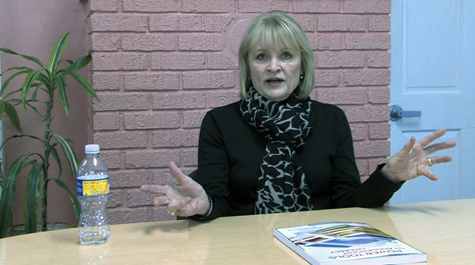Boundary spanner: Rozzelle takes W&M research to public schools
Rozzelle is the executive director of the School-University Research Network (SURN) at the College of William and Mary, a program that helps public-school teachers utilize the latest research and literacy tools on behalf of their students. Although the program operates summer-literacy programs, in-class follow-up visits and other services in partnership with the commonwealth’s K-12 public educators, Rozzelle seems particularly concerned for teachers of adolescents and their students. As a former eighth-grade teacher, she knows their plights in terms of classroom pressures as well as funding: The bulk of federal and state resources for literacy programs and training are steered toward elementary schools, Rozzelle said.
“Many of the teachers I work with in middle schools feel like they’ve been left behind. They feel that adolescents have been left behind,” she said. Yet, in many ways, helping these young people rise beyond illiteracy and aliteracy—a reluctance to read—is key to helping them realize their learning potential not only in English classrooms but in mathematics, science and other disciplines, Rozzelle explained.
“In the middle schools is our last chance to reach them with the tools that will enable them to be successful in the 21st century,” she said.
As part of the SURN program, Rozzelle recently published Power Tools for Adolescent Literacy. The book features classroom-tested strategies designed to help teachers take students beyond the reactive mode of learning that relies on fill-in-the-blank-type exercises.
“We’re asking teachers to think about how can we move beyond the passive mode that we put students in when they’re listening to us lecture into a more generative mode where they’re creating,” Rozzelle said.
Since SURN was founded more than a decade ago, it has benefitted from the involvement of numerous faculty members within the School of Education. Among its ardent supporters is Virginia McLaughlin, dean of the school. About the center’s director, McLaughlin said, “Jan is the ideal person to lead SURN. By working closely with superintendents, principals and teachers, she identifies the most critical needs and is then able to mobilize the expertise of our partner schools, the School of Education and the national consultants to address those needs.”
Currently SURN, which is one of 10 similar institutes within the School of Education at the College, maintains partnerships with 27 school districts in the commonwealth.















